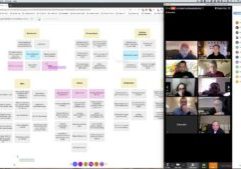Congratulations to Trinity University for being well on their way to achieving a long-sought goal: to pivot the reputation of Trinity from the typical "safety school" to an aspirational app school. Applications are up to 9800 this year, which means the acceptance rate could drop to 29% for 2019. Quite a shift from 2013 when I began working with them to redesign their website, when their acceptance rate was around 64%:
"For the fourth year in a row, a record-breaking number of students have applied for admission to Trinity University for Fall 2019. This figure currently sits at 9,569 applications, and Eric Maloof, vice president for Enrollment Management, estimates Trinity will receive 9,800 applications in total.
Because of the increase in applications, Maloof estimates the admission rate dropping to 29 percent, the lowest in University history. The admission rate was 64 percent as recently as 2013 and has steadily decreased since. Trinity boasted an admission rate of 34 percent last year."
TRINITY UNIVERSITY
During the redesign we conducted a large amount of research and discovery and our results matched Trinity's data that prospective students saw Trinity as a safety school – one of the schools to apply to if you didn't think you'd get into either of the 2 big Texas publics. I distinctly remember an enrolled student telling me he applied to Trinity – a school he had never considered – after after his mom urged him, "just in case."
This was the perception that Trinity was desperate to change. University leadership correctly saw the future of higher ed and their middle of the pack position left them extremely vulnerable, and undifferentiated. They needed to pivot, and urgently.
“Our website is absolutely critical to enrollment efforts – it needs to help us reposition our message from value towards quality.”
DR. CHARLES WHITE, VP/MARKETING AND COMMUNICATIONS, TRINITY UNIVERSITY
This was made very clear to the team when we interviewed Dr. Charles White, and he had no qualms that Trinity would do (and likely spend) whatever it takes to reposition the university. He described it as a pivot – to not abandon the current perception of the school (great value), but maintain it and add quality. He presciently understood that owning both attributes would be a winning combination in the highly competitive Texas market, and the fruits of that strategy have paid off:
"Maloof notes that the quality of students applying is increasing alongside the number of applications. Of the students already admitted for the Fall 2019 first-year class, the average SAT score is 1404, the mean high school GPA is 3.74, and the mean ACT score is 31.4, all improvements over 2018."
TRINITY UNIVERSITY
That Trinity has a healthy endowment and the resources to make this pivot happen is of course a factor in the success of the strategy, but in my view only peripherally. Trinity's successful pivot is due in large part to a strategic marketing and communications plan, including one of the more robust social media efforts I've ever seen: their social platforms are on-brand and on message, always focused on student and faculty academic achievement, eschewing the non-academic stories that many schools produce to communicate the experience outside the classroom. The results seem clear: more high-achieving students are choosing Trinity, and the falling acceptance rate is producing the desired feedback loop.










